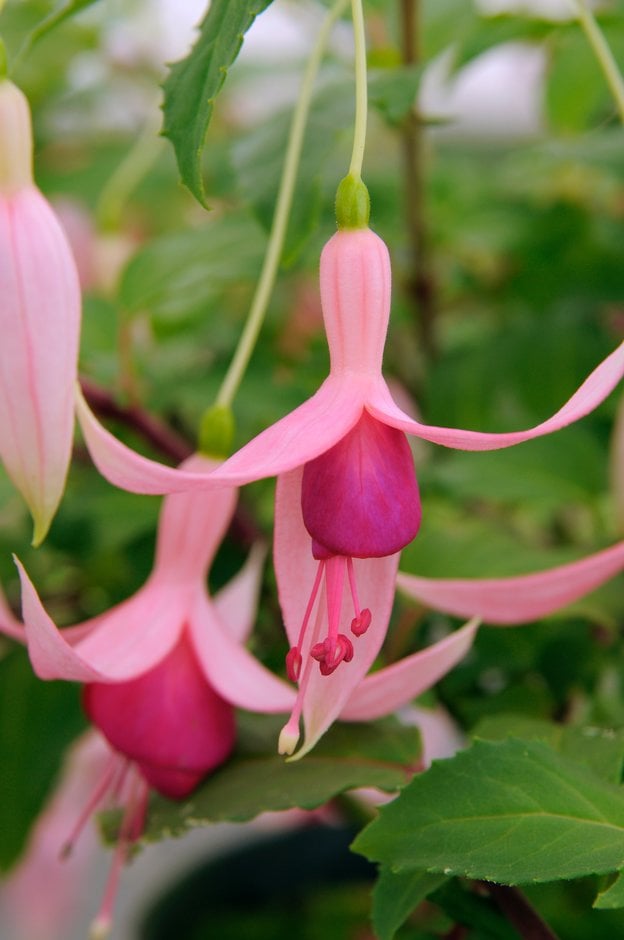Fuchsia 'Beverley'
fuchsia 'Beverley'
An upright, bushy shrub with oval, toothed dark green foliage. Single, pale pink tubular flowers with pale pink sepals and dark pink-purple corollas appear during the summer months. In some milder areas this variety may be semi-evergreen and grow a little taller.

Buy this plant
Size
Ultimate height
0.5–1 metresTime to ultimate height
2–5 yearsUltimate spread
0.5–1 metresGrowing conditions
Moisture
Moist but well–drained, Well–drainedpH
Acid, Alkaline, NeutralColour & scent
| Stem | Flower | Foliage | Fruit | |
| Spring | Green | |||
|---|---|---|---|---|
| Summer | Pink | Green | ||
| Autumn | Green | |||
| Winter |
Position
- Full sun
- Partial shade
Aspect
East–facing or South–facing or West–facing
Exposure
Sheltered Hardiness
H3Botanical details
- Family
- Onagraceae
- Native to GB / Ireland
- No
- Foliage
- Deciduous or Semi evergreen
- Habit
- Bushy
- Potentially harmful
- Although Fuchsia berries are edible, most are not particularly tasty and are sparsely produced on plants. Fuchsia plants are generally grown as an ornamental and not for fruit crops within the UK
- Genus
Fuchsia can be deciduous or evergreen shrubs or trees, rarely perennials, with opposite or whorled leaves and usually pendent flowers with conspicuous tubular calyx, 4 spreading sepals and 4 erect petals
- Name status
Accepted
How to grow
Cultivation
Grow in a unheated greenhouse in containers of peat-free multi-purpose compost in bright indirect light and keep just moist. Can be grown outside in the summer months in sun or part shade, water freely and use a general liquid fertiliser monthly. May be hardy in mild areas or inner city locations. See tender fuchsia cultivation for further information
Propagation
Propagate by softwood or semi-hardwood cuttings
Suggested planting locations and garden types
- City and courtyard gardens
- Coastal
- Cottage and informal garden
- Patio and container plants
- Wildlife gardens
- Conservatory and greenhouse
- Flower borders and beds
Pruning
Pests
May be susceptible to aphids, capsid bug, fuchsia gall mite, fuchsia flea beetle, glasshouse red spider mite and vine weevil
Diseases
May be susceptible to fuchsia rust, grey moulds and honey fungus (rarely)
Love gardening
Sign up to receive regular gardening tips, inspiration, offers and more
View our Privacy Policy
Get involved
The Royal Horticultural Society is the UK’s leading gardening charity. We aim to enrich everyone’s life through plants, and make the UK a greener and more beautiful place.